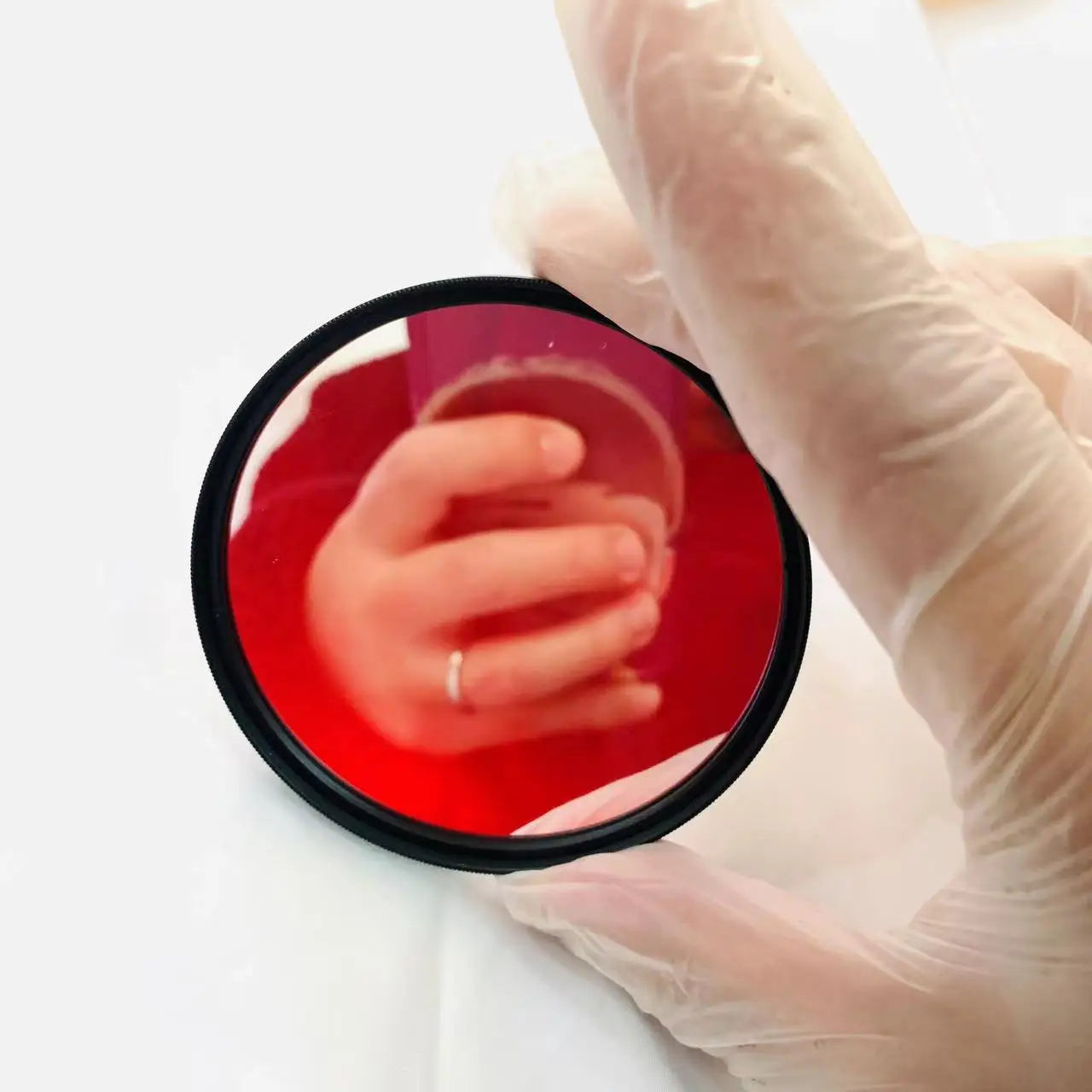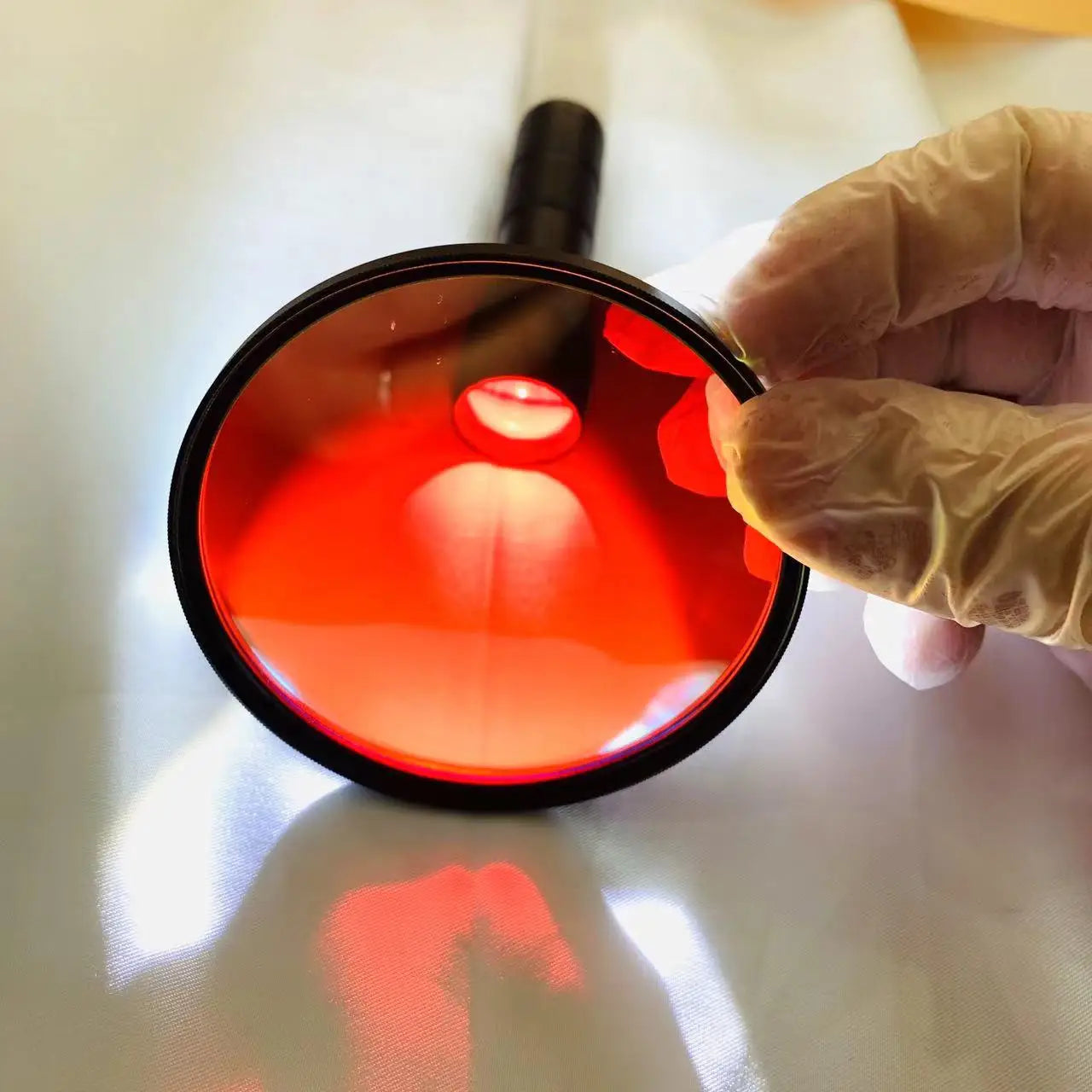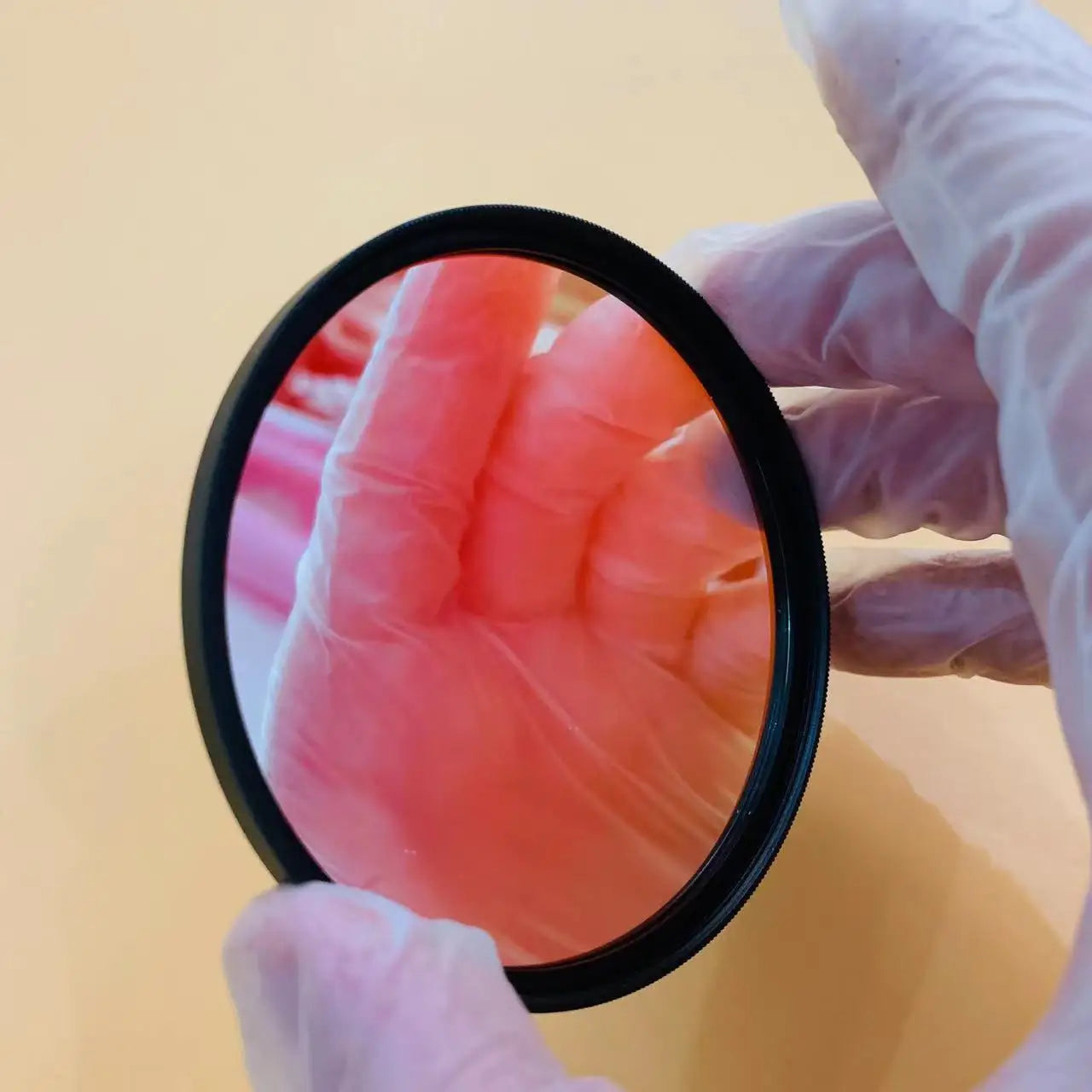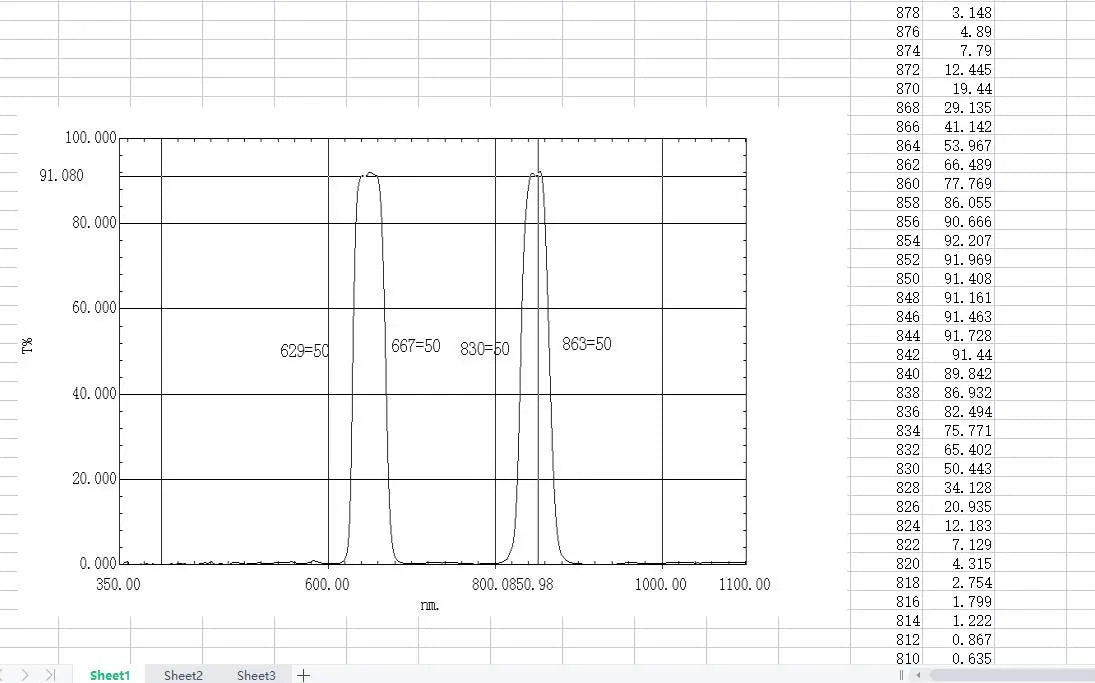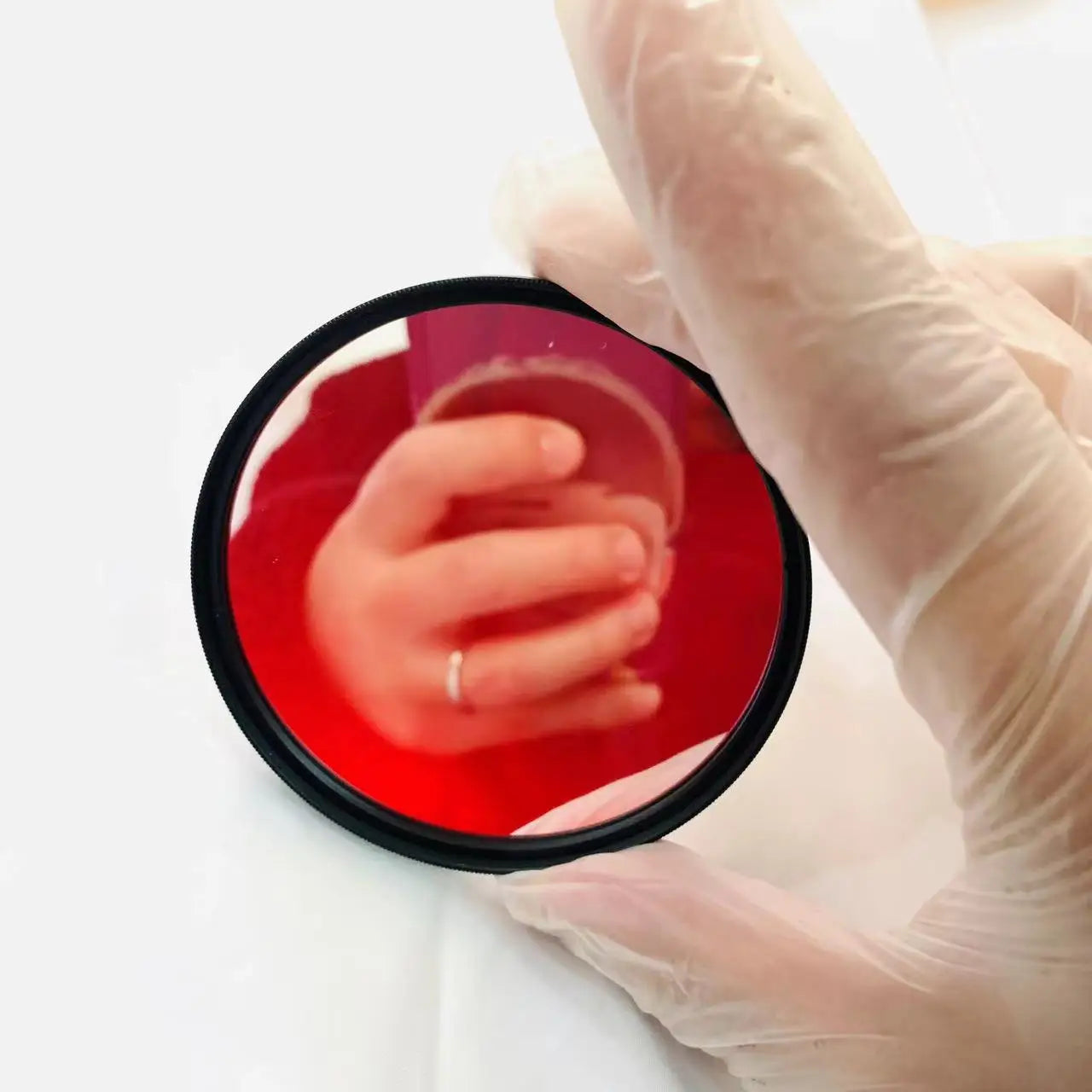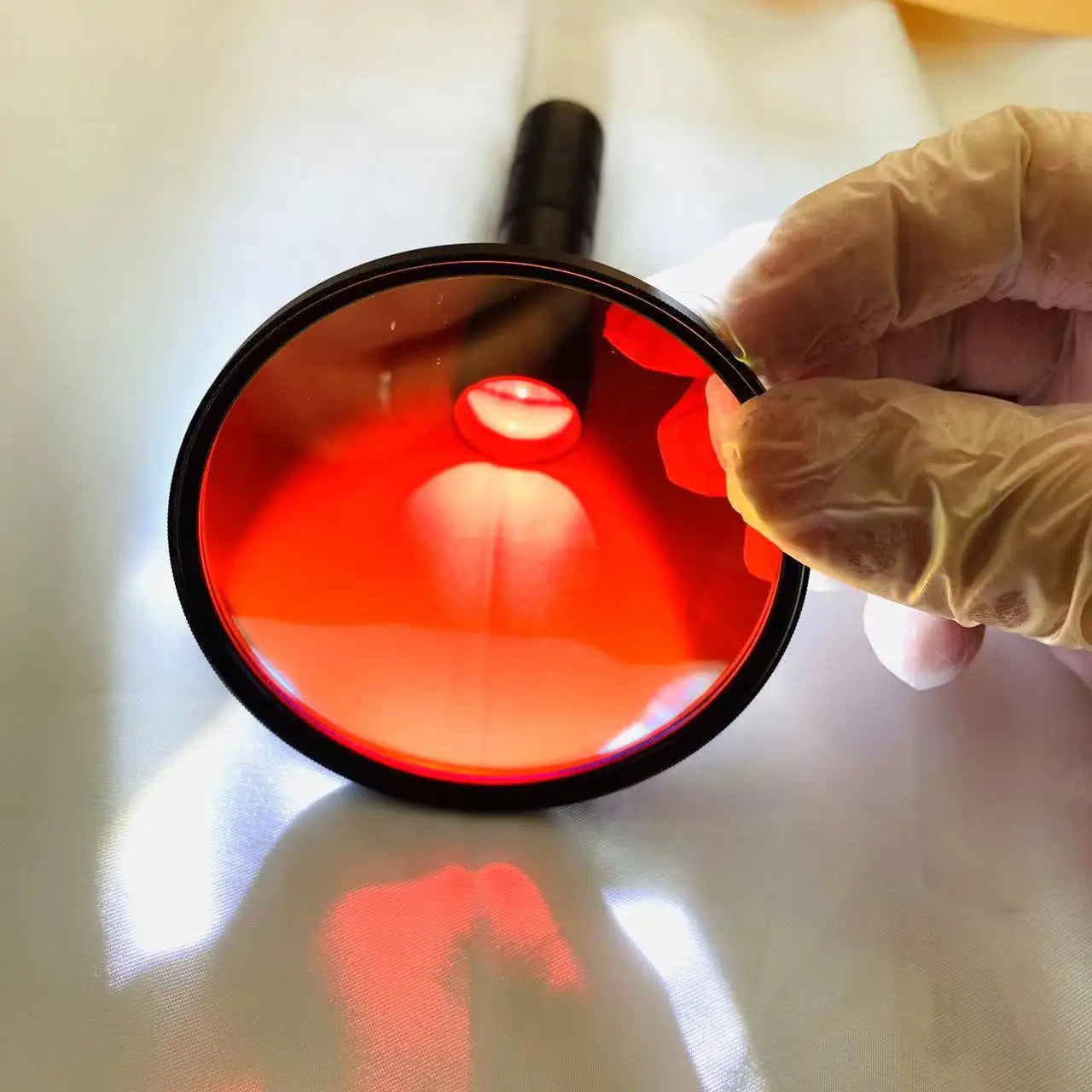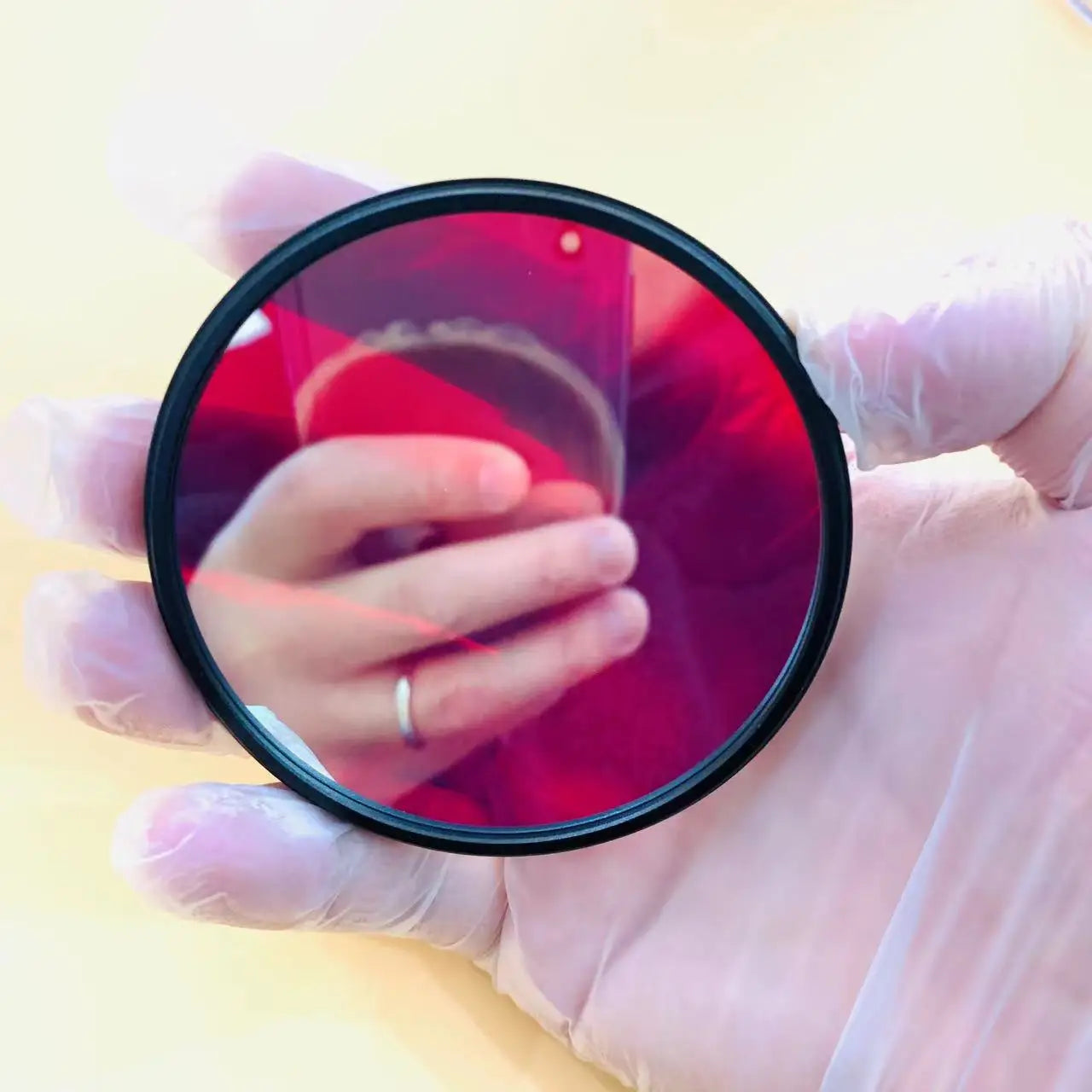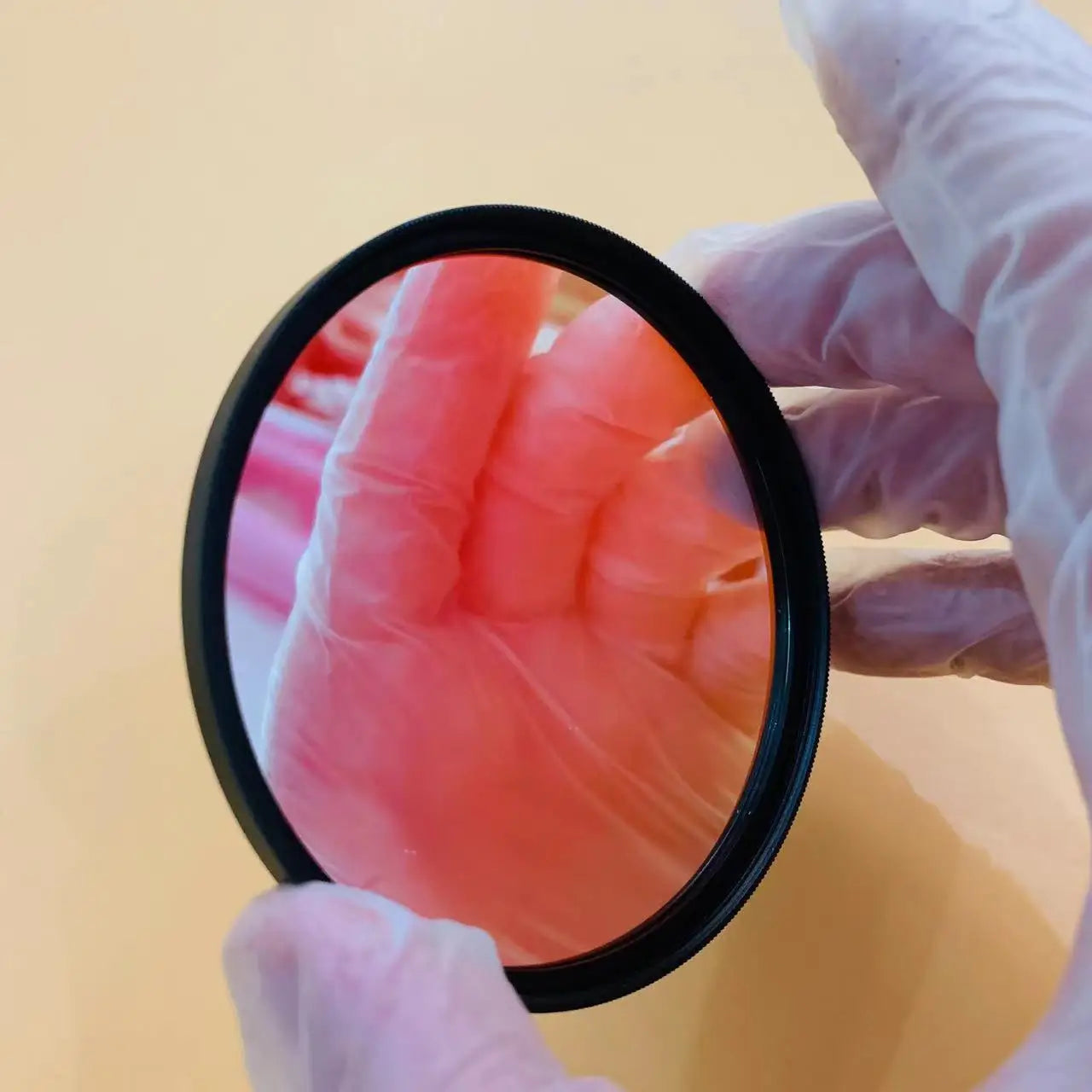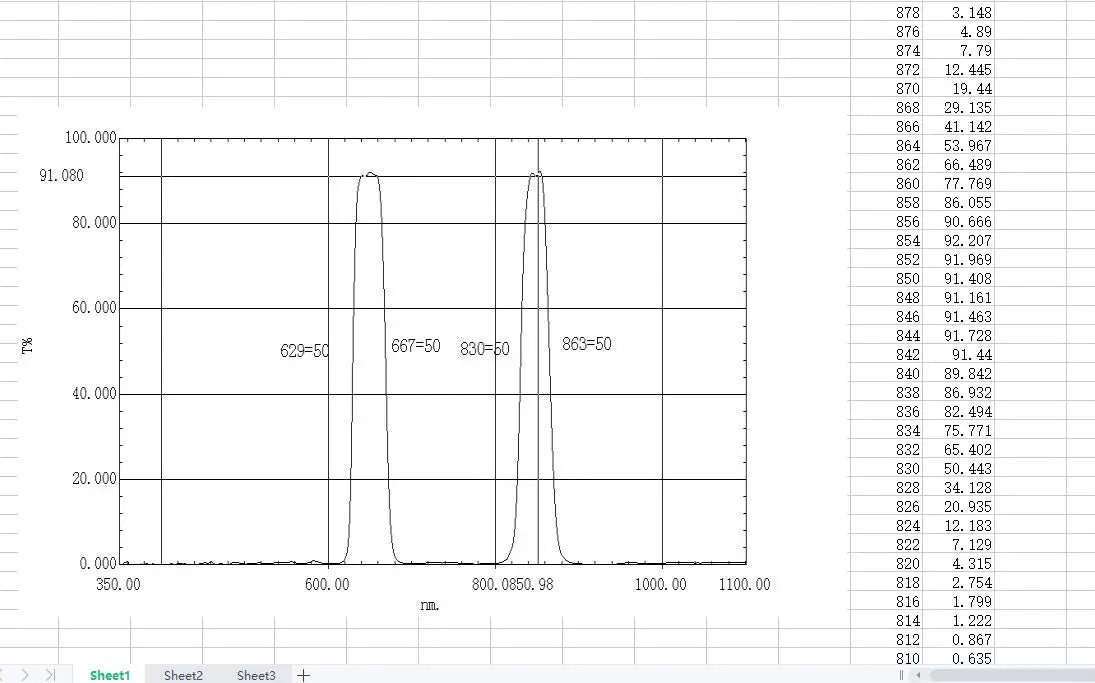Mandiak
Dual Bandpass Filter for Camera Lens
Dual Bandpass Filter for Camera Lens
FREE SHIPPING
Couldn't load pickup availability
The Dual Bandpass Filter for Camera Lens Astrophotography is an essential tool designed to elevate your astrophotography experience. With its dual-bandpass functionality and precision-engineered construction, this filter enables photographers to capture breathtaking images of the cosmos with enhanced clarity and detail.
Key Features:
- Dual-Bandpass Functionality: Equipped with dual-bandpass technology, the filter offers simultaneous filtering of two specific wavelength ranges: 660nm (Red) and 850nm (Near-Infrared/NIR). This unique feature enables photographers to capture images with enhanced color saturation and contrast, as well as explore the hidden world of infrared photography.
- Thread Frame Ring: Each filter comes with a thread frame ring, ensuring secure attachment to your camera lens and providing added protection during use. The thread frame ring also facilitates hassle-free installation, allowing photographers to quickly and easily integrate the filter into their existing setup.
- Multiple Sizes Available: The Dual Bandpass Filter is available in multiple sizes, catering to a wide range of camera lenses and ensuring compatibility with various photography setups. Whether you're shooting with a standard kit lens or a professional-grade telephoto lens, there's a size option to suit your specific requirements.
- High-Quality Glass Construction: Crafted from premium-quality optical glass, the filter delivers exceptional image quality with minimal distortion and aberration. The glass construction ensures optimal light transmission, allowing photographers to capture sharp and detailed images with unparalleled clarity and precision.
Specifications:
- Product: Dual Bandpass Filter
- Functionality: Dual-Bandpass (660nm Red / 850nm NIR)
- Sizes Available: Multiple sizes with thread frame ring
- Wavelength Ranges: 660nm (Red), 850nm (Near-Infrared/NIR)
- Construction: High-Quality Optical Glass
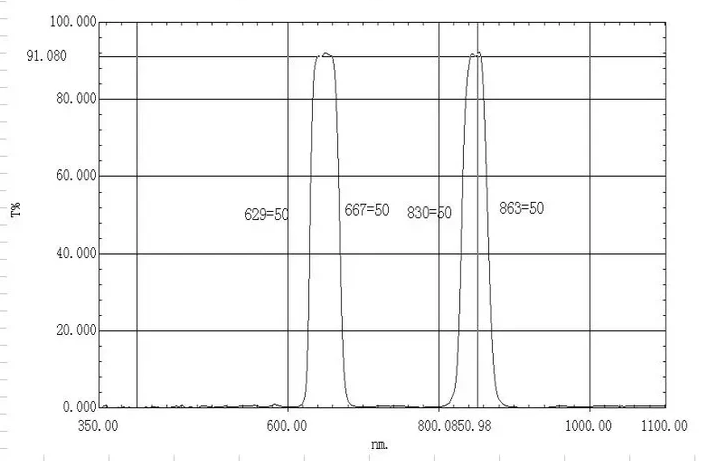
Applications:
- Deep-Sky Astrophotography: Capture detailed images of nebulae, galaxies, and star clusters with enhanced contrast and detail using the 660nm (Red) and 850nm (Near-Infrared/NIR) bandpass filtration.
- Planetary Imaging: Enhance the visibility of planetary features and surface details by selectively filtering specific wavelengths of light, allowing for improved clarity and resolution in planetary astrophotography.
- Landscape Photography: Capture vivid landscapes with enhanced color saturation and contrast using the 660nm (Red) bandpass.
- Infrared Photography: Explore the world of infrared photography and unveil the hidden beauty of the NIR spectrum with the 850nm (Near-Infrared/NIR) bandpass.
- Creative Expression: Experiment with dual-bandpass filtration to create unique and artistic compositions, blending the vibrant colors of the visible spectrum with the surreal tones of infrared imagery.
Dual Bandpass Filter for Astrophotography
The Dual Bandpass Filter for astrophotography, particularly with 660nm (Red) and 850nm (Near-Infrared/NIR) wavelengths, offers significant advantages for capturing celestial objects with enhanced clarity and detail.
- Enhanced Contrast and Detail: The 660nm (Red) bandpass selectively filters out specific wavelengths of light associated with atmospheric and light pollution, resulting in enhanced contrast between celestial objects and the background sky. This allows astrophotographers to capture faint details and subtle features of nebulae, galaxies, and star clusters with greater clarity.
- Reduction of Light Pollution: Light pollution, caused by artificial sources such as streetlights and urban development, can obscure celestial objects and diminish image quality in astrophotography. By incorporating a 660nm (Red) bandpass filter, the Dual Bandpass Filter effectively blocks out unwanted light pollution, enabling astrophotographers to capture clearer images of the night sky even in light-polluted areas.
- Near-Infrared Sensitivity: The inclusion of an 850nm (Near-Infrared/NIR) bandpass filter in the Dual Bandpass Filter provides astrophotographers with the ability to capture celestial objects in the near-infrared spectrum. Certain astronomical phenomena, such as dust clouds and gas nebulae, emit radiation predominantly in the infrared range. By utilizing the 850nm bandpass filter, astrophotographers can reveal hidden details and structures that may be invisible to the naked eye or traditional camera sensors.
- Versatility in Imaging: The combination of 660nm (Red) and 850nm (Near-Infrared/NIR) bandpass filters offers versatility in astrophotography, allowing photographers to experiment with different imaging techniques and capture a wide range of celestial phenomena. Whether photographing deep-sky objects, planetary surfaces, or atmospheric phenomena, the Dual Bandpass Filter provides astrophotographers with the flexibility to adapt to various imaging scenarios and achieve stunning results.
The Dual Bandpass Filter, with its inclusion of both 660nm (Red) and 850nm (Near-Infrared/NIR) wavelengths, is highly beneficial for astrophotography due to its ability to enhance contrast, reduce light pollution, reveal hidden details in the near-infrared spectrum, and offer versatility in imaging techniques. It empowers astrophotographers to capture the wonders of the cosmos with unparalleled clarity and precision, unlocking new opportunities for exploration and discovery in the night sky.
Dual Bandpass Filter in Photography
The Dual Bandpass Filter, particularly with 660nm (Red) and 850nm (Near-Infrared/NIR) wavelengths, finds applications beyond astrophotography, extending into various fields where selective wavelength filtration and near-infrared imaging are beneficial. Some general applications include:
- Photography and Videography: In traditional photography and videography, dual-bandpass filters can be used to enhance color contrast and reduce atmospheric haze, resulting in clearer and more vibrant images. Near-infrared imaging can also reveal unique textures and details not visible to the naked eye, offering creative opportunities for artistic expression.
- Remote Sensing and Surveillance: Dual-bandpass filters are utilized in remote sensing applications, such as aerial and satellite imagery, for vegetation analysis, environmental monitoring, and surveillance purposes. Near-infrared wavelengths are particularly useful for detecting changes in vegetation health, identifying land use patterns, and monitoring thermal emissions.
- Medical Imaging: Near-infrared imaging techniques are increasingly employed in medical imaging applications, including optical coherence tomography (OCT) and fluorescence imaging. Dual-bandpass filters can enhance image contrast and depth penetration in these techniques, facilitating the visualization of tissue structures, blood vessels, and pathological abnormalities.
- Industrial Inspection: In industrial settings, dual-bandpass filters are utilized for quality control, defect detection, and material analysis. Near-infrared imaging can penetrate certain materials and coatings, allowing for non-destructive testing and inspection of components, surfaces, and structures.
- Security and Forensics: Dual-bandpass filters play a role in security and forensic applications, such as document authentication, counterfeit detection, and forensic analysis. Near-infrared imaging can reveal hidden markings, security features, and alterations in documents and currency.
- Environmental Monitoring: Dual-bandpass filters are used in environmental monitoring applications, including water quality assessment, pollution detection, and climate research. Near-infrared imaging can aid in the identification of pollutants, algae blooms, and vegetation health indicators in aquatic and terrestrial ecosystems.
Experience the wonders of astrophotography like never before with the Dual Bandpass Filter for Camera Lens Astrophotography. Whether you're capturing the intricate structures of distant nebulae or exploring the surface features of celestial bodies, this filter empowers you to unlock the mysteries of the cosmos and capture awe-inspiring images that inspire wonder and imagination. Embark on a journey of exploration and discovery with the Dual Bandpass Filter and transform your astrophotography dreams into reality.
Share
